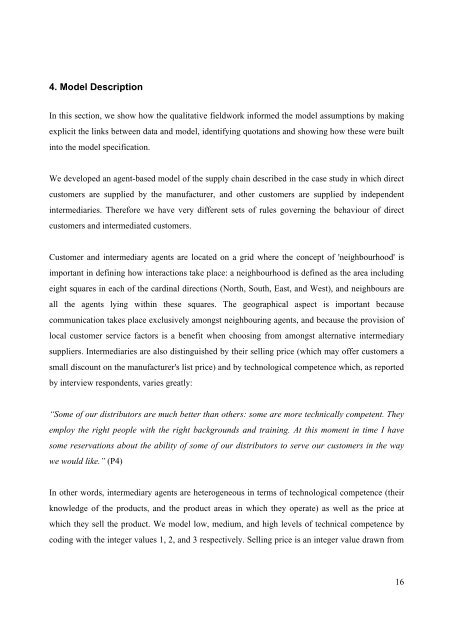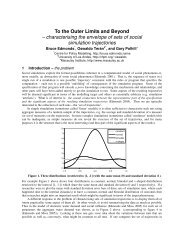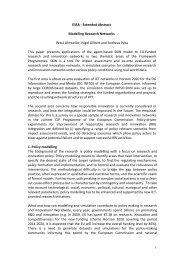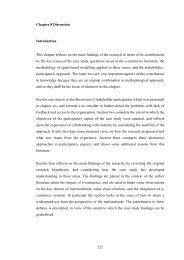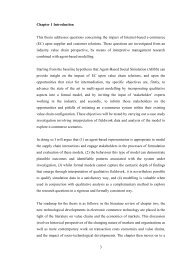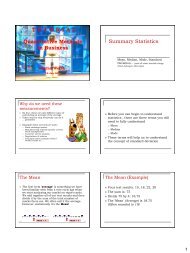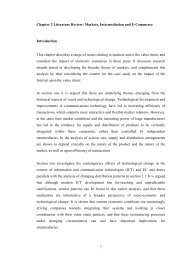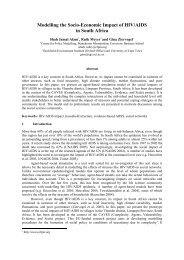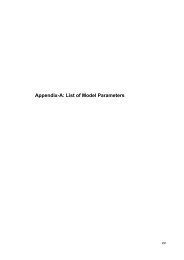1 Agent-Based Modelling Incorporating Qualitative and Quantitative ...
1 Agent-Based Modelling Incorporating Qualitative and Quantitative ...
1 Agent-Based Modelling Incorporating Qualitative and Quantitative ...
Create successful ePaper yourself
Turn your PDF publications into a flip-book with our unique Google optimized e-Paper software.
4. Model Description<br />
In this section, we show how the qualitative fieldwork informed the model assumptions by making<br />
explicit the links between data <strong>and</strong> model, identifying quotations <strong>and</strong> showing how these were built<br />
into the model specification.<br />
We developed an agent-based model of the supply chain described in the case study in which direct<br />
customers are supplied by the manufacturer, <strong>and</strong> other customers are supplied by independent<br />
intermediaries. Therefore we have very different sets of rules governing the behaviour of direct<br />
customers <strong>and</strong> intermediated customers.<br />
Customer <strong>and</strong> intermediary agents are located on a grid where the concept of 'neighbourhood' is<br />
important in defining how interactions take place: a neighbourhood is defined as the area including<br />
eight squares in each of the cardinal directions (North, South, East, <strong>and</strong> West), <strong>and</strong> neighbours are<br />
all the agents lying within these squares. The geographical aspect is important because<br />
communication takes place exclusively amongst neighbouring agents, <strong>and</strong> because the provision of<br />
local customer service factors is a benefit when choosing from amongst alternative intermediary<br />
suppliers. Intermediaries are also distinguished by their selling price (which may offer customers a<br />
small discount on the manufacturer's list price) <strong>and</strong> by technological competence which, as reported<br />
by interview respondents, varies greatly:<br />
“Some of our distributors are much better than others: some are more technically competent. They<br />
employ the right people with the right backgrounds <strong>and</strong> training. At this moment in time I have<br />
some reservations about the ability of some of our distributors to serve our customers in the way<br />
we would like.” (P4)<br />
In other words, intermediary agents are heterogeneous in terms of technological competence (their<br />
knowledge of the products, <strong>and</strong> the product areas in which they operate) as well as the price at<br />
which they sell the product. We model low, medium, <strong>and</strong> high levels of technical competence by<br />
coding with the integer values 1, 2, <strong>and</strong> 3 respectively. Selling price is an integer value drawn from<br />
16


